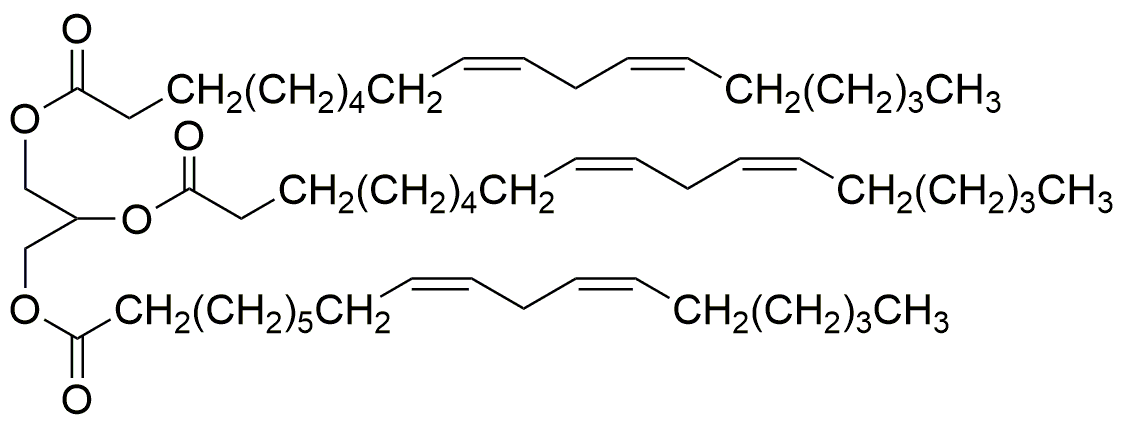Trilinolein is widely utilized in research focused on:
- Food Industry: As a natural emulsifier, it enhances the texture and stability of various food products, improving mouthfeel and shelf life.
- Cosmetics: Commonly used in skin care formulations, it provides moisturizing properties and helps to improve skin elasticity, making it ideal for lotions and creams.
- Pharmaceuticals: Serves as a carrier for drug delivery systems, facilitating the absorption of lipophilic drugs and improving their bioavailability.
- Research Applications: Utilized in studies related to lipid metabolism and nutrition, offering insights into the effects of fatty acids on health.
- Agriculture: Acts as a surfactant in pesticide formulations, enhancing the effectiveness of active ingredients and promoting better crop protection.
General Information
Properties
Safety and Regulations
Applications
Trilinolein is widely utilized in research focused on:
- Food Industry: As a natural emulsifier, it enhances the texture and stability of various food products, improving mouthfeel and shelf life.
- Cosmetics: Commonly used in skin care formulations, it provides moisturizing properties and helps to improve skin elasticity, making it ideal for lotions and creams.
- Pharmaceuticals: Serves as a carrier for drug delivery systems, facilitating the absorption of lipophilic drugs and improving their bioavailability.
- Research Applications: Utilized in studies related to lipid metabolism and nutrition, offering insights into the effects of fatty acids on health.
- Agriculture: Acts as a surfactant in pesticide formulations, enhancing the effectiveness of active ingredients and promoting better crop protection.
Documents
Safety Data Sheets (SDS)
The SDS provides comprehensive safety information on handling, storage, and disposal of the product.
Product Specification (PS)
The PS provides a comprehensive breakdown of the product’s properties, including chemical composition, physical state, purity, and storage requirements. It also details acceptable quality ranges and the product's intended applications.
Certificates of Analysis (COA)
Search for Certificates of Analysis (COA) by entering the products Lot Number. Lot and Batch Numbers can be found on a product’s label following the words ‘Lot’ or ‘Batch’.
*Catalog Number
*Lot Number
Certificates Of Origin (COO)
This COO confirms the country where the product was manufactured, and also details the materials and components used in it and whether it is derived from natural, synthetic, or other specific sources. This certificate may be required for customs, trade, and regulatory compliance.
*Catalog Number
*Lot Number
Safety Data Sheets (SDS)
The SDS provides comprehensive safety information on handling, storage, and disposal of the product.
DownloadProduct Specification (PS)
The PS provides a comprehensive breakdown of the product’s properties, including chemical composition, physical state, purity, and storage requirements. It also details acceptable quality ranges and the product's intended applications.
DownloadCertificates of Analysis (COA)
Search for Certificates of Analysis (COA) by entering the products Lot Number. Lot and Batch Numbers can be found on a product’s label following the words ‘Lot’ or ‘Batch’.
*Catalog Number
*Lot Number
Certificates Of Origin (COO)
This COO confirms the country where the product was manufactured, and also details the materials and components used in it and whether it is derived from natural, synthetic, or other specific sources. This certificate may be required for customs, trade, and regulatory compliance.

